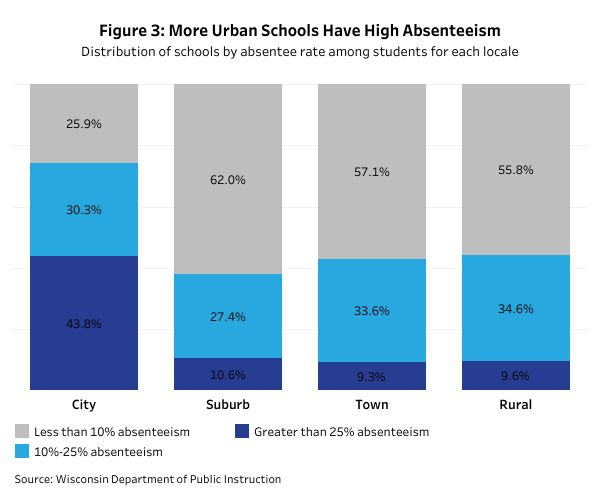WISCONSIN — Wisconsin schools saw a “troubling increase” in chronic absences amid the pandemic, according to a new report from Wisconsin Policy Forum.
The report examines the 2020-21 school year, when COVID-19 ravaged the U.S.
It found that the amount of Wisconsin’s public school students identified as chronically absent increased by 3.7% from 2017 to 2021, rising from 12.4% to 16.1%.
The Wisconsin Policy Forum attributes the increase to a rise in chronically absent students and a drop in overall enrolled students during this time period. Chronically absent students increased by 23.9% while the amount of students enrolled decreased by 4.5%.
What’s most concerning to researchers is that absenteeism was highest in schools with large portions of low-income students and students of color.
Researchers called these findings “an additional threat to efforts to bridge the state’s longstanding achievement gaps for these K-12 students.”

But what is absenteeism?
According to the Wisconsin Police Forum, since 2019, being “chronically absent” in Wisconsin means a student has missed more than 10% of possible school days, including both excused and unexcused absences. In order for students to be counted in this count, they must also be enrolled for at least 90 days of the school year.
However, reported numbers from 2021 are tricky because the definition of an absence was not consistent throughout the pandemic. Wisconsin Policy Forum researchers said that was because districts often had less strict or different guidelines for taking attendance during that year.
For example, in virtual schooling settings, a student may have been considered present simply by being there or they may have needed to actively participate in class. These different policies may have resulted in underestimates.
Despite this, schools were still seeing high reports of absenteeism. A large portion of the increase came from the state’s largest districts, which reported a collective absentee rate of 31.8% in 2021 — other districts and schools had a rate of 12.6%.
When compared to 2017, the largest school districts’ chronic absentee rate rose by 28.8% in 2021. That percentage was higher for all other districts in Wisconsin; it rose by 31% in the same period. Urban schools also had higher absentee rates.

High school students in Wisconsin have always had a higher rate of absenteeism, according to the Wisconsin Policy Forum. Yet, in 2021, absenteeism worsened at a higher rate for younger students. Middle school students had the largest increase, rising from 11.7% to 16.7%.
By far, the most stunning takeaway is that absenteeism was higher in schools with disadvantaged groups. Wisconsin Policy Forum research found that schools with absentee rates above 25% had higher rates of students from low-income households (69.1%) or students that were not white (62%).
When looking at schools with absentee rates lower than 5%, those numbers of disadvantaged students dropped.
The same was true for schools with larger amounts of students with disabilities. In schools where absentee rates were above 25%, students with identified disabilities made up 17.9% of students, whereas that number was only 2.4% for schools with absentee rates below 5%.
This is especially important when it’s considered that chronic absenteeism has been shown to have negative effects on student achievement, student mental health, dropout rates and overall adulthood.

Researchers said the rising absenteeism trend is not unlike what’s happening across the nation. They pointed to state reports, which estimated that the number of chronically absent students may have doubled nationwide compared to pre-pandemic levels.
But, they did say “it’s still unclear whether that increase was a onetime, pandemic-related spike.”
Wisconsin Policy Forum officials said statewide intervention may be needed to address the issue “before they can no longer be remedied.”
They also suggested districts may want to consider expanding after-school tutoring and summer schools to make up for lost learning.
The group said new statewide data for 2022 will be released this spring.



